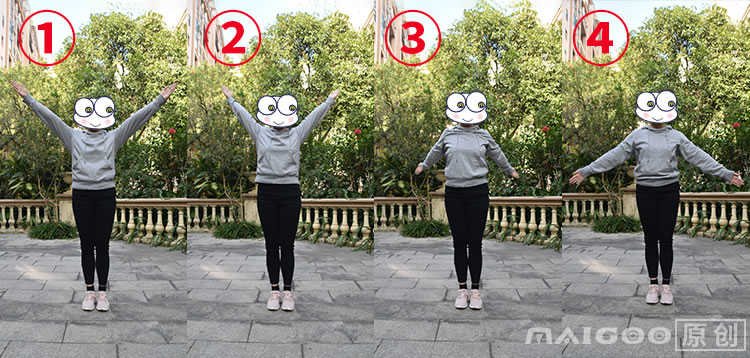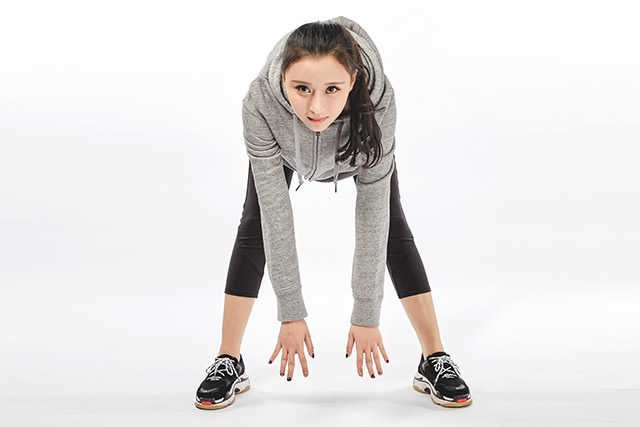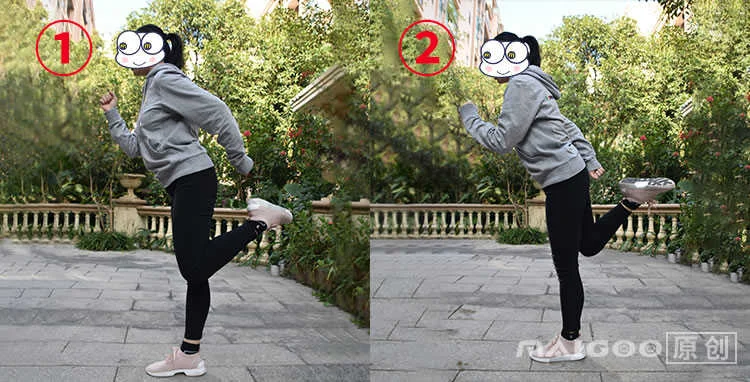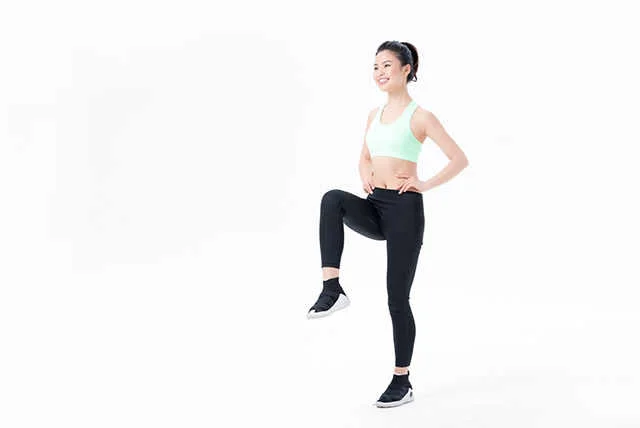Instructions for the abduction activity
Remember: Hold the cane handle with both hands to support your weight.Due to the passage of an important vascular plexus of armpit, it is performed to avoid compression damage.
Notice: According to the actual situation, the doctor will refer to the several methods listed below to guide you to choose the affected leg load when using the double -turning:

Irritability: That is, the affected legs are not strong, that is, keep your legs away from the ground;
Lighter: You can use your toes to maintain balance;
Partial load: You can divide your body weight to the affected legs;
Kele: Affordinate most weight or even all weights to the feet;
Full weight: Full load, as long as it does not hurt.
Notice: Be sure to follow the doctor's guidance to prevent too much or too little weight and affect rehabilitation.
How to walk around
1. The direction of supporting the two -turning support on both sides of the feet is supported to keep your body stable;
2. Try to press on the bilateral ribs on the top of the two crutches. Do not use your armpit directly on the crutches, straighten your elbows, and support your weight with your hands;
3. Move forward at the same time on both turns;
4. Move your legs forward in the same plane between the double -turn;
5. Placing the normal legs forward and putting it in front of the double turning;
6. Repeat it continuously, you can walk forward (double abduction-& gt; legs-& gt; normal legs).
Tip: Do not rely on the double -turning top during walking.
Use a cane to get up to stand the cube method
1. Before you are ready to stand, please determine whether the chair or bed is stable and firm;
2. Normal legs are supported on the ground, and the body moves forward to the edge of the chair or bed;
3. Get together together with the double -turn, hold the crutches handle with the hand on the side of the leg, and hold the hand armrest or bed edge of the healthy hand;
4. Support hard work together, and at the same time your normal legs stand up and keep standing firmly.
Note: Before you start walking, make sure that you have stood up, and then separate the cane on both sides of your body.
How to sit down with a cane
1. Slowly backwards, until the legs on the normal side touch the edge of the chair or bed;
2. Keep your weight on the normal leg, put the double -turn together together;
3. Hold the crutch handle with the hand on the side of the legs, put the hands on the side of the chair or bed edge, then bend the healthy side knee, and slowly sit down;
4. Sit down and take your time.Always keep the double turbine beside the chair.
Note: Unless the doctor allows your legs to partial load, you still need to keep your affected legs from leaving the ground.
Turn up and down the upper and lower steps or stairs
1. If there are armrests in steps or stairs, try to use the handrails as much as possible.Combine the two crutches together and hold the hand away from the side of the handrail of the stairs (as shown in the figure); hold the handrail of the stairs with the other hand, try to get close to the armrest;
2. There is no handrail staircase: According to the guidance method, both hands are held with a crutch, just like walking.
superiorHandrailstairs
1. When you are ready to go upstairs, move your body to a staircase on the bottom floor;
2. Merge and double -turn handle, hold the handrails on the other side, try to get closer to the armrest as possible;
3. Support both hands at the same time, cross the normal legs forward to the first -level stairs;
4. Keep your weight support on the normal leg;
5. Move the double turn and get the legs to the same level of stairs;
6. Repeat it continuously and go upstairs.Don't be too anxious on the staircase.
superiorHand -no -handedstairs
1. When you are ready to go upstairs, move your body to a staircase on the bottom floor;
2. Hold a crutch of both hands and support it at the same time, and put the normal legs forward to the first -level stairs;
3. Keep the weight support on the normal leg;
4. Move the double turn and get the legs to the same level of stairs;
5. Repeat it continuously and go upstairs.Don't be too anxious on the staircase.
Note: When you go upstairs, if someone assists, ask him or she to stand behind you to protect you.
downHandrailstairs
1. Move your body near the edge of the stairs;
2. Merge and double -turn handle, hold the handrails on the other side, try to get closer to the armrest as possible;
3. Hold the handrail along the handle, hold the double turbine to the next stairs, and move the affected legs down;
4. After the hands are supported by both hands, move the stairs under normal legs;
5. Repeat it continuously and go downstairs.Don't be too anxious under a grid stairs.
downHand -no -handedstairs
1. Move your body near the edge of the stairs;
2. Hold a crutch of both hands, move the double turbine to the next staircase, while suffering from the legs;
3. After supporting stability with both hands, move the center of gravity, and then move the stairs under normal legs;
4. Repeat it continuously and go downstairs.Don't be too anxious under a grid stairs.
Note: When you go downstairs, if someone assists, ask him or her to stand in front of you to protect you.
Remember: "Good legs are above, bad legs are down."
How to use a cane to pass the door
Please make sure that the door has enough space to allow your feet and double turns.After opening the door, first hold the cane's foot on the side of the door, hold on the door.Then pass the door.
1. Please use the crutch correctly to make sure not to press the armpit at the top of the crutch.If you feel numb and uncomfortable with the armpits, please correct the way of abduction immediately.If the use method is correct, but it is still found that the armpit is pressured, it may be that your crutches are too long, and you need to be shortened.
2. Determine the crutches with rubber pads, thick shoulder brackets and handles.Ensure that these parts are firm, not loose, and no serious damage, and need to be replaced if necessary.
3. If your hands are prone to pain or fatigue, you can thicken the cushion on the crutch handle.
4. Avoid turning on the slippery ground.If you have to do it, try to slow down.
5. The Carpet or cushion on the floor is easy to slide. Try to move as much as possible. Do not use a crutch to move above.
6. During the abduction, please wear a protective and supported shoes, or rather barefoot and do not wear slippers.
7. When using a crutch, the crutch may scratch the Skin between your arms and chest walls.You can use moisturizing water or refreshing powder to prevent Skin wear.










